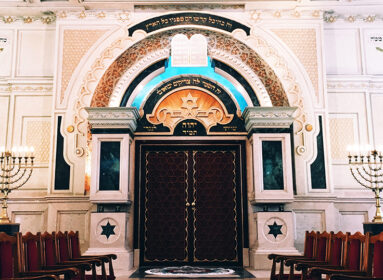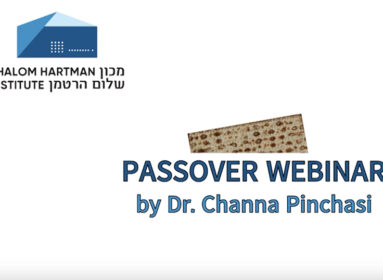Holocaust survivors donate Holocaust book collection to Sacred Heart
By Cindy Mindell
HAMDEN – Renee and Geoffrey Hartman have been an integral part of Jewish life at Yale for nearly 60 years. She, a Holocaust survivor and he, a refugee who escaped the Nazis, were instrumental in bringing to life the Fortunoff Video Archive for Holocaust Testimonies at Yale, which spawned the university’s Program in Judaic Studies.
Geoffrey Hartman was born in Frankfurt, Germany in 1929 and was placed on a Kindertransport to England in 1939, where he spent six years on the Waddeston estate of James Rothschild with 19 other boys. After being reunited with his mother in New York in 1945, he graduated from Queens College and earned a doctorate at Yale in comparative literature. He taught at Yale for almost 40 years before retiring in 2009 as Sterling Professor of English and Comparative Literature. He has been widely described as one of the most distinguished literary scholars in the country.
Born in Czechoslovakia in 1934, Renee Glassner was deported at age 10 to the Bergen-Belsen concentration camp, along with her younger sister. The two were liberated a year later, in April 1945, the only members of their family to survive. After spending three years in Sweden, the sisters came to the U.S. in 1948, first to Brooklyn for a year and then to a foster family in New Haven, arranged by the Jewish Social Services Association in New York. She earned a degree in library sciences from Southern Connecticut State University and worked in public libraries in Hamden and Fairfield.
The two met at Yale Hillel in the early 1950s. “He was a graduate student,” Renee says. “She was a ‘townie,’” Geoffrey says.
The Hartmans share a passion for the English language and poetry and have both published books of original poetry, influenced by their childhood experiences. Renee also wrote Bergen-Belsen 2009, a chapter in the anthology, The Power of Witnessing: Reflections, Reverberations, and Traces of the Holocaust, based on an academic conference held at Bergen-Belsen in 2009. In addition to his many academic works, Geoffrey’s memoir, A Scholar’s Tale: Intellectual Journey of a Displaced Child in Europe was published in 2007 (Fordham University Press). Renee is currently writing her memoir.
The couple helped found the Fortunoff Video Archive for Holocaust Testimonies at Yale, the first collection dedicated to preserving survivors’ oral histories. Geoffrey served as Faculty Advisor and Project Director at the archive and from this effort, was asked to raise funds to establish the Program in Judaic Studies at Yale.
In 2012, the Hartmans selected Sacred Heart University in Fairfield as the recipient of their extensive collection of scholarly books on the Holocaust. They spoke with the Ledger about how Jewish institutional life has grown at Yale and why a Catholic university makes the best home for a Holocaust book collection.
Q: How did the idea for the Fortunoff Video Archive arise?
Renee Hartman: In 1978, I was one of the first four survivors interviewed on videotape by [local TV host] Laurel Vlock and [child survivor] Dr. Dori Laub for the Holocaust Survivors Film Project in New Haven. The city was the first in the U.S. to have given public space for a Holocaust memorial, in 1977, and Laurel Vlock decided to interview us because she got interested in the memorial and in the Holocaust.
Geoffrey Hartman: It was supported by William Rosenberg, president of the local chapter of the Farband Labor Zionist organization, and by many members of the chapter who were survivors. I think we were the first to systematically interview Holocaust survivors. In 1981, the original collection of testimonies was deposited at Sterling Memorial Library at Yale, with the support of [then-president] A. Bartlett Giamatti.
We had to invent the whole structure of doing this, had to make sure that the survivors were properly questioned, that they had enough time to answer, and so we had to train quite a few helpers in that direction. By 1979, when we entered this area, there had already been a huge amount of individual literature but I don’t know of any major university that had engaged with this kind of task. There was some effort within the Florida state university system.
Then we expanded throughout the U.S. We seeded small projects in major areas of the U.S., making them independent of us but requiring that they send a failsafe copy of their recordings to us. There are now many [37] affiliated projects across North America, South America, Europe, and Israel.
It was 10 or 11 years later that Steven Spielberg had the same idea. His entourage consulted with us and the Fortunoff people trained the Spielberg people. But the Shoah Foundation then launched itself on a much larger level, 10 times as big as ours. We thought about doing a limited number of interviews with second-generation survivors, especially of people who had already begun to think about their relation to the Holocaust. But the priority was so strong to get the work done with the first generation and our funds were always limited. We have about half a dozen interviews with people whose parents went through the Holocaust and who started projects at their universities similar to our larger project.
There was a real problem of fading and decay of the videotape, despite our care and storing procedure.
About two years ago, it became clear that we would have to digitize the collection. With a new digital system, we hope it will remain vivid and that we lose very little if anything of what has been recorded. It has been accepted by now that these are valuable documents. These are not sacred documents but they are very important within the area of almost any field of study but especially humanistic studies.
So I think that, once the issue of preservation is settled by digitizing, the next step will be to expand the number of universities that come to us wanting to view or having the capacity to view the archives. At the moment, they have to travel to Yale to do so; once the digitizing is finished – possibly the end of this year or the beginning of next year – as the Spielberg people have shown, there will be a great deal of interest in contracting with us to view these testimonies.
Q: How did the Program in Judaic Studies develop?
GH: When Renee was interviewed for the film project, I suddenly realized that the interviews would have a larger meaning for education and I helped to fundraise for the project. Harvard and Brown had already developed Judaic studies as a major, and Bart [Giamatti] made it possible to found a major at Yale about a year after the video archive was established, but he wanted to support it properly. He asked me to become the fundraiser and I insisted that we add the videotaping project to the financing as a separate but parallel project.
RH: It wasn’t easy to raise money because Yale was not known as a Jewish center.
GH: On the contrary; Yale did not have a good reputation for admitting Jews. Those Jews who had been admitted and successful in their way of life and their jobs often expressed the sentiment that they wanted their children to enjoy Yale but were a little bit uneasy about Jewish studies because that might ghettoize them again. One had to overcome that and we did, but it took a little time.
We imported quite a few professors from Israel, at least parttime. At that time, Israeli academia was flourishing in Judaic thought and, in fact, many academics didn’t particularly want to come to America, but that changed.
At the moment, I think Judaic Studies at Yale is flourishing, even more than I expected. It happened gradually all over America, at the time when the situation in Israel turned a little bit away from pride in its Jewish studies because of financial problems and when donors insisted on other areas. As that happened, we fortunately or unfortunately benefitted from those who wanted to leave.
Q: Why did you decide to donate your book collection to Sacred Heart University?
RH: I started very early to collect books on the Holocaust and we also bought books, and books were sent to us by various authors, so we had a sizable collection by the time we retired. The reason we selected Sacred Heart is we had heard that they were the first Catholic university to teach the Holocaust and that it was a very well-attended class.
GH: It was also helpful that the development officer at Renee’s alma mater [Southern Connecticut State University] was quite charismatic and we had given Southern our collection of modern-poetry books for an MFA program. The same person left for Sacred Heart and we kept up our relationship with her and she was partly instrumental in urging us to do something like that for Sacred Heart.
My feeling was that they would benefit most from the collection, that other universities could get Jewish donors but would a Catholic university be able to? I don’t know if it would have the same appeal. We were very happy with the development officer and Sacred Heart promised to keep the collection together and make a good catalog for it.
We wanted to make the donation to a university that has an active program in Christian-Jewish understanding and that would welcome our collection. The important thing to us is that the collection gets used. I used the books a great deal, and it gives us great pleasure to think that others will continue to benefit from them.
For more information on the Fortunoff Video Archive for Holocaust Testimonies at Yale: www.library.yale.edu/testimonies.
Comments? email cindym@jewishledger.com.







 Southern New England Jewish Ledger
Southern New England Jewish Ledger















